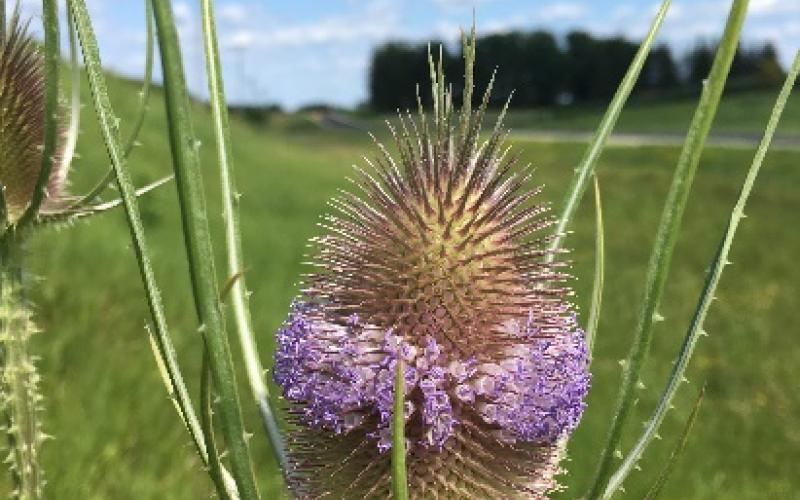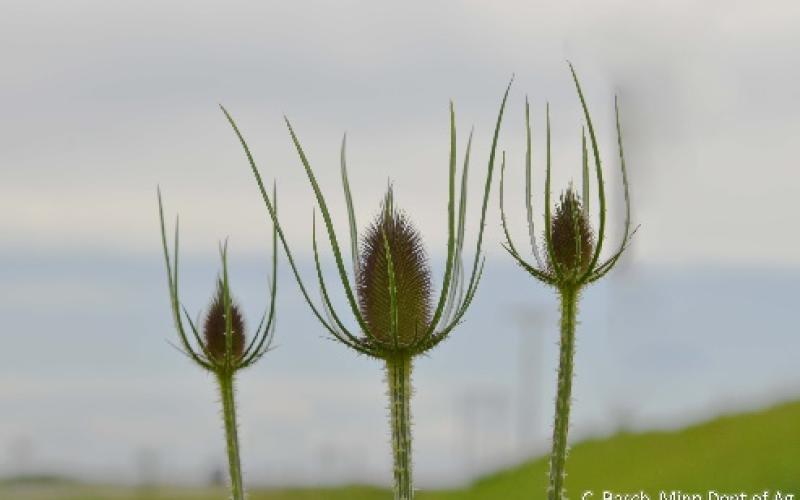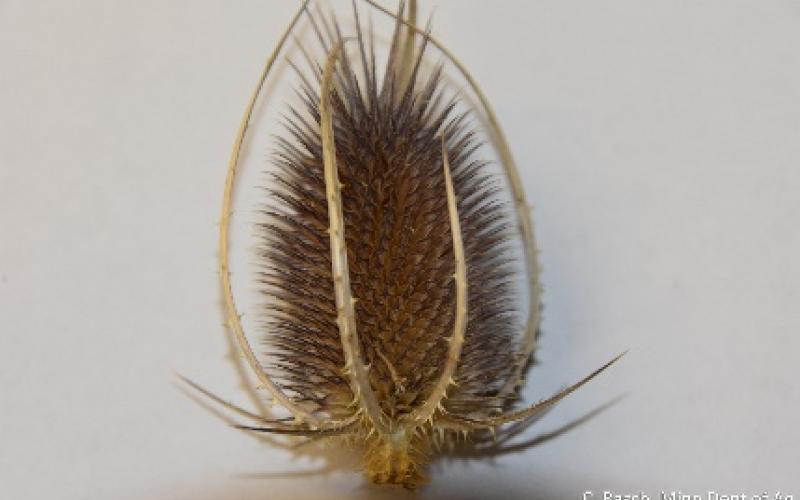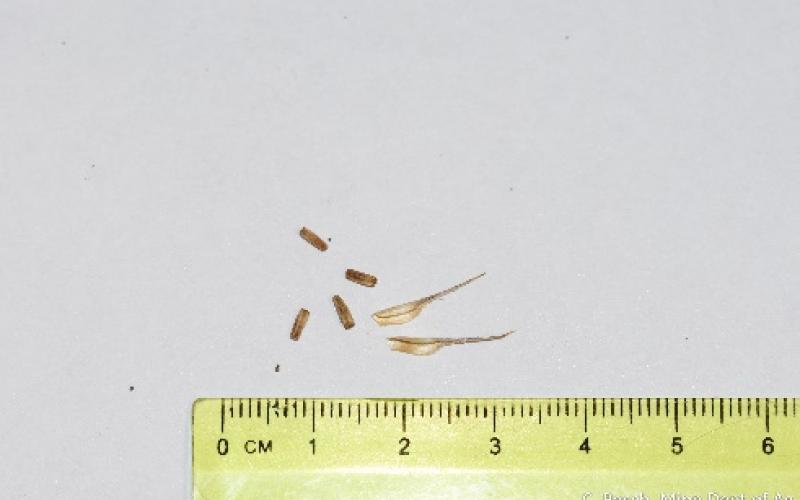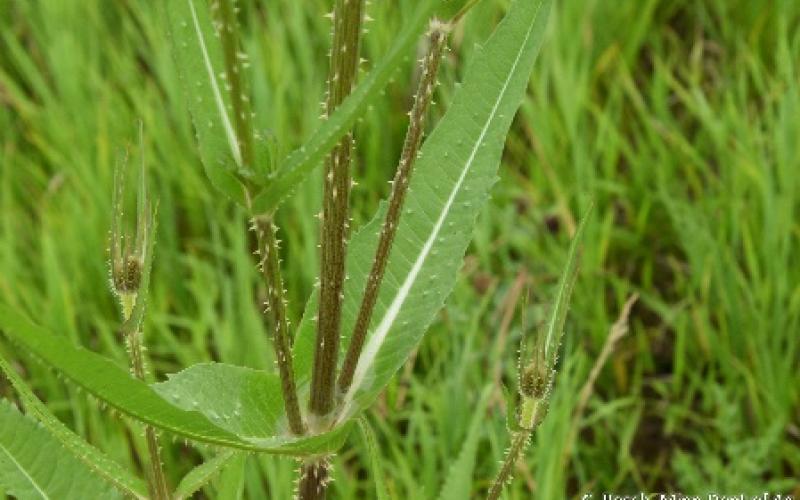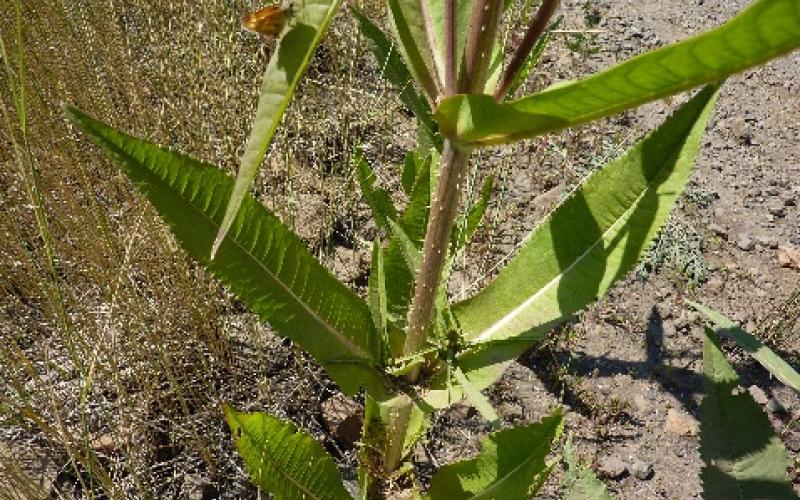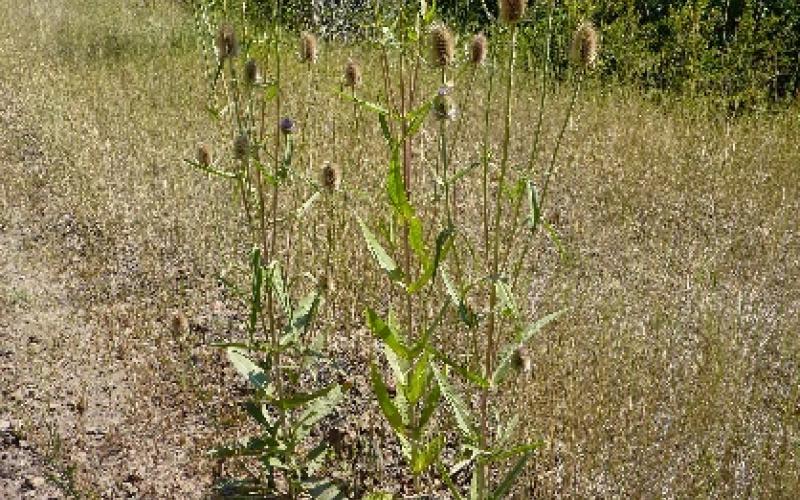Common name: Common Teasel
Scientific name: Dipsacus fullonum L.
Related species: Cutleaf teasel (D. laciniatus), Fuller's teasel (D. sativus)
Legal Status
All above and below ground parts of the plant must be destroyed. Additionally, no transportation, propagation, or sale of this plant is allowed. Failure to comply may result in an enforcement action by the county or local municipality.
Background
Common teasel is a threat to Minnesota's pastures, natural areas, and roadsides. It was introduced to the United States in the 1700s. Like its close relative cutleaf teasel, it was used in the textile industry to raise the nap on woolen cloth and as an ornamental in gardens and floral arrangements. It escaped cultivation and has since spread throughout the United States.
Description
- Common teasel is a monocarpic perennial that produces seed once before dying. The plant forms a taproot and rosette its first year and often produces seed its second year (biennial). It can stay in a rosette form for more than one year.
- Once teasel stores enough energy, it will send up a prickly, and hollow stalk with opposite, unlobed leaves that form a cup.
- The flowers are produced on a 4-7 foot stalk. Blooming occurs from June to October. Flower heads are egg shaped with sharp bracts surround each pink to purple flower. The larger, outer bracts extend past the flowerhead.
Habitat
Prefers sunny, open habitats such as roadsides or pastures. Teasels tolerate wet and dry soils. It will easily establish in disturbed areas, but can also invade high quality environments
Means of spread and distribution
Teasels are prolific seed producers with most seed falling near the parent plant. The result is expansion of existing infestations. Long range dispersal starting new infestations can occur by a variety of means. Seed can float along riparian corridors, drift with the snow, journey along transportation corridors and recreational trails from seed shed from soil on tires and vehicle undercarriages. It can also be spread on mowing equipment. Teasel has been noted in or near graveyards, spread by seed from dried floral arrangements. Birds can consume, then distribute teasel seeds. It can be found in all northern states from Massachusetts to Colorado and in Oregon.
Impact
The teasels form large dense stands that choke out desirable plant species. This can reduce forage, wildlife habitat, and species diversity.
Prevention and management
- Do not plant teasels or intentionally move soil, including soil adhered to recreational vehicles or lawn/garden equipment, which may contain seed of this species. Do not use seedheads in floral arrangements.
- Infestation sites will need to be monitored and treated repeatedly until the seedbanks are depleted. Teasel seedbanks remain viable for a relatively short time, 3-5 years. With diligent control, eradication may be feasible within this time frame.
- Hand-pulling and digging are management options for small infestations, but the large, fleshy taproots are difficult to remove. Flowers and seedheads will need to be bagged and disposed of.
- Frequent mowing throughout the growing season that prevents flowering can deplete food reserves in the taproots and reduce stands over time. It is important to monitor the site and ensure that plants do not flower on short stalks. Also remove any stalks that were flattened, but not cut by the mower.
- This species also responds favorably to annual herbicide treatments. For specific herbicide recommendations, contact your local University of Minnesota Extension agent, co-op, or certified landscape care expert. There are several businesses throughout the state with certified herbicide applicators that can be hired to perform chemical applications.
- Biological control is not a management option at this time, but is in development.
